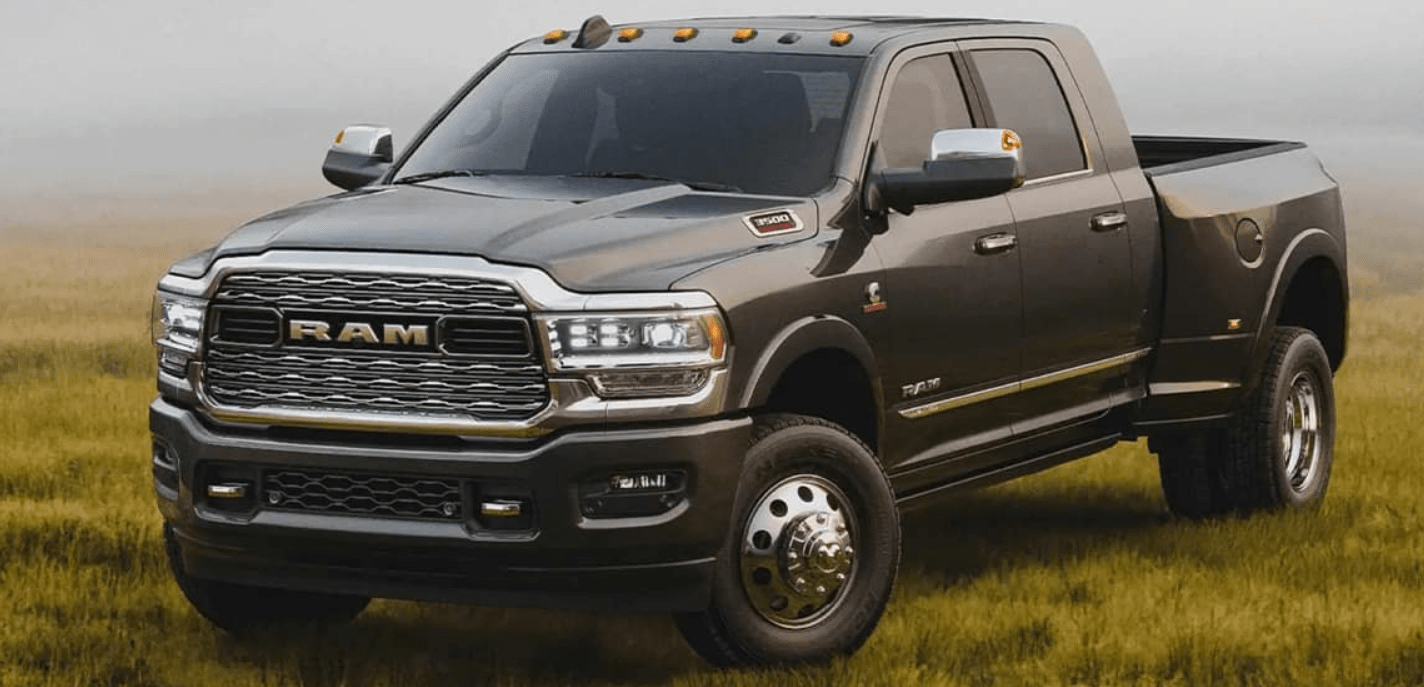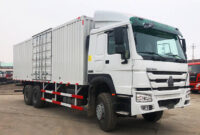3500 Heavy Duty Trucks For Sale: Your Ultimate Guide to Power and Performance pickup.truckstrend.com
For those who demand uncompromising power, unparalleled towing capabilities, and robust hauling capacity, the 3500 series heavy-duty truck stands as the undisputed king of the road. Far more than just a means of transport, these formidable machines are purpose-built workhorses, designed to tackle the most demanding jobs with remarkable ease. Whether you’re a contractor needing to haul heavy equipment, a rancher transporting livestock, a dedicated RVer pulling a large fifth-wheel, or a small business owner requiring serious payload capacity, a 3500 heavy-duty truck is often the ideal solution.
This comprehensive guide will delve into every aspect of 3500 heavy-duty trucks for sale, helping you understand their capabilities, navigate the market, and make an informed decision to find the perfect truck for your needs.
3500 Heavy Duty Trucks For Sale: Your Ultimate Guide to Power and Performance
Understanding the 3500 Designation: What Makes Them "Heavy Duty"?
The "3500" designation, commonly seen across brands like Ford (F-350 Super Duty), Ram (3500), and General Motors (Chevrolet Silverado 3500HD and GMC Sierra 3500HD), refers to what is colloquially known as a "one-ton" truck. This classification signifies a vehicle engineered for extreme duty, setting it apart from its lighter 1500 (half-ton) and 2500 (three-quarter-ton) counterparts.
The "heavy-duty" nature of a 3500 truck stems from several key characteristics:
- Gross Vehicle Weight Rating (GVWR): These trucks boast significantly higher GVWRs, typically ranging from 10,000 lbs to over 14,000 lbs. This rating dictates the maximum permissible weight of the fully loaded truck, including the vehicle itself, passengers, cargo, and any tongue weight from a trailer.
- Gross Combined Weight Rating (GCWR): The GCWR is perhaps the most critical metric for heavy haulers, representing the maximum allowable weight of the truck, its contents, and any attached trailer, fully loaded. 3500 trucks often have GCWRs exceeding 30,000 lbs, with some reaching over 40,000 lbs.
- Payload Capacity: Thanks to reinforced frames, heavy-duty suspension components, and robust axles, 3500 trucks offer impressive payload capacities, frequently exceeding 6,000 lbs and, in some configurations, approaching 7,500 lbs.
- Towing Capacity: This is where 3500 trucks truly shine. With the ability to tow conventional trailers weighing over 20,000 lbs and fifth-wheel/gooseneck trailers often exceeding 30,000 lbs (and in some cases, pushing past 37,000 lbs), they are built for the biggest jobs.
- Engine and Drivetrain: To handle such immense loads, 3500 trucks are typically equipped with powerful engine options, predominantly large displacement gasoline V8s or, more commonly, high-torque diesel engines (like Ford’s Power Stroke, Ram’s Cummins, or GM’s Duramax). These are paired with heavy-duty automatic transmissions designed for extreme durability and smooth power delivery under load.
- Braking Systems: Larger, more robust braking systems, often with integrated exhaust brakes on diesel models, ensure safe and controlled stops, even with heavy trailers attached.

Key Applications and Industries Served
The versatility and brute strength of 3500 heavy-duty trucks make them indispensable across a wide array of applications and industries:

- Construction: Hauling excavators, skid steers, building materials, tools, and job site trailers.
- Agriculture and Ranching: Transporting livestock trailers, hay bales, feed, and farm equipment.
- Recreational Towing: Ideal for pulling large fifth-wheel RVs, multi-horse trailers, or substantial boat trailers, ensuring stability and safety on long journeys.
- Commercial Services: Landscaping companies (hauling mulch, equipment), plowing services, hot-shot trucking (expedited freight delivery), mobile welding, and other specialized trade services often rely on 3500 trucks.
- Utility and Fleet Operations: Many utility companies and large fleets utilize 3500 series trucks for their durability and capacity to carry specialized equipment and tools.
- Specialized Upfits: Their robust chassis makes them perfect platforms for custom upfits such as flatbeds, service bodies, dump beds, wrecker bodies, or even snowplow packages.

Top Manufacturers and Popular Models
When searching for 3500 heavy-duty trucks for sale, you’ll primarily encounter offerings from the "Big Three" American manufacturers, each with its own loyal following and distinct features:
- Ford F-350 Super Duty: Renowned for its class-leading towing and payload capacities, the F-350 offers powerful gasoline and Power Stroke diesel engine options. Ford’s Super Duty line is often lauded for its robust construction, innovative technology features like Pro Power Onboard (generator system), and a wide range of trim levels from basic work trucks to luxurious King Ranch and Platinum models.
- Ram 3500: Ram trucks are celebrated for their comfortable, often luxurious interiors, even in work-oriented trims. The Ram 3500 is powered by the legendary Cummins turbo-diesel engine, known for its immense torque and reliability, or a potent HEMI V8 gasoline engine. Ram also offers advanced towing technology and a highly capable air suspension system on some models.
- Chevrolet Silverado 3500HD / GMC Sierra 3500HD: These GM twins share a common platform, offering robust capabilities with the powerful Duramax turbo-diesel engine paired with the Allison transmission (a highly respected combination in the industry) or a strong gasoline V8. They are known for their comfortable ride, intuitive infotainment systems, and a range of smart towing features like multiple camera views. GMC typically offers more premium features and styling.
Buying Your 3500 Heavy Duty Truck: New vs. Used
The decision between a new or used 3500 truck largely depends on your budget, specific needs, and tolerance for depreciation.
Buying New:
- Pros: Full factory warranty, access to the latest technology and safety features, complete customization options (trim, engine, cab, bed, colors), often better financing rates.
- Cons: Higher upfront cost, significant depreciation in the first few years, potentially longer wait times for specific configurations.
- Who it’s for: Buyers who need the absolute latest capabilities, want full warranty peace of mind, or require a very specific configuration for their business.
Buying Used:
- Pros: Significant cost savings (allowing you to get a higher trim or more features for your budget), less depreciation going forward, immediate availability, wider selection of model years and configurations.
- Cons: No factory warranty (or limited remaining), potential for wear and tear, higher mileage, possible hidden mechanical issues, may lack the newest technology.
- Who it’s for: Budget-conscious buyers, those who don’t need the absolute latest tech, or individuals looking for a solid work truck without the new vehicle price tag.
Tips for Buying Used:
- Thorough Inspection: Always get a pre-purchase inspection by a trusted mechanic specializing in heavy-duty trucks. Check for rust, frame damage, leaks, and signs of neglect.
- Maintenance Records: Request detailed service history. Consistent maintenance is crucial for heavy-duty trucks, especially those with diesel engines.
- VIN Check: Run a VIN (Vehicle Identification Number) check (e.g., CarFax, AutoCheck) to uncover accident history, title issues, and reported mileage.
- Test Drive: Pay close attention to how the truck drives – transmission shifts, braking, steering, and any unusual noises. If possible, test drive it with a load or trailer similar to what you intend to pull.
Essential Considerations Before Purchase
Before committing to a 3500 heavy-duty truck, carefully consider these factors to ensure you select the best fit for your requirements:
-
Intended Use & Capacity Needs: This is paramount.
- Towing: What is the maximum weight of the trailer you’ll tow? Will it be conventional, fifth-wheel, or gooseneck? Factor in the weight of the trailer itself plus its cargo.
- Payload: How much weight will you carry in the truck bed (tools, equipment, cargo)?
- Frequency: Will you be towing/hauling daily, weekly, or occasionally? This impacts engine choice and long-term durability needs.
-
Engine Choice: Gas vs. Diesel:
- Gasoline Engines: Generally lower upfront cost, simpler maintenance, quicker warm-ups in cold weather. Ideal for lighter towing/hauling or intermittent heavy use.
- Diesel Engines: Higher upfront cost, more expensive maintenance (though less frequent), superior torque for heavy towing, better fuel economy when under load, and typically longer lifespan. Essential for consistent heavy towing/hauling.
-
Drivetrain: 2WD vs. 4WD:
- 2WD (Two-Wheel Drive): Typically rear-wheel drive (RWD) for better traction under load. Lighter, slightly better fuel economy, lower cost. Sufficient for paved roads and light-duty off-road.
- 4WD (Four-Wheel Drive): Adds capability for off-road conditions, snow, mud, or launching boats on slippery ramps. Higher cost, increased weight, slightly lower fuel economy.
-
Cab Configuration:
- Regular Cab: Two doors, minimal interior space behind seats. Best for work trucks where maximum bed length and maneuverability are priorities.
- Extended Cab (SuperCab/Quad Cab): Smaller rear doors, limited rear seating. A compromise for occasional rear passengers or secure interior storage.
- Crew Cab (Mega Cab for Ram): Four full-size doors, ample rear seating and legroom. Ideal for families, work crews, or long trips. Most popular configuration.
-
Bed Length:
- Short Bed (approx. 6.5 ft): More maneuverable, easier to park. Sufficient for many tasks, but may limit fifth-wheel hitch clearance depending on cab configuration.
- Long Bed (approx. 8 ft): Provides maximum cargo capacity and is generally preferred for fifth-wheel/gooseneck towing due to better hitch clearance. Less maneuverable.
-
Single Rear Wheel (SRW) vs. Dual Rear Wheel (DRW – "Dually"):
- SRW: Standard configuration with one tire per side on the rear axle. Sufficient for most heavy-duty tasks and offers better maneuverability.
- DRW (Dually): Features two tires per side on the rear axle (total of four rear tires). Significantly increases payload and towing stability, especially for wide or very heavy trailers (e.g., large fifth-wheels, commercial goosenecks). Wider stance, reduced maneuverability.
-
Trim Levels and Features: From basic "work truck" trims (vinyl seats, minimal tech) to luxurious "King Ranch," "Laramie," or "Denali" models (leather, heated/cooled seats, advanced infotainment, premium sound systems), choose a trim that balances your comfort needs with your budget.
-
Budgeting: Beyond the purchase price, factor in:
- Fuel Costs: Heavy-duty trucks, especially diesels, have large fuel tanks but can still consume a lot of fuel, particularly when loaded.
- Insurance: Higher premiums than lighter vehicles.
- Maintenance: Heavier-duty components and diesel engines can mean higher maintenance costs for parts and labor.
- Registration/Taxes: Varies by state and vehicle weight.
Maintenance and Ownership Tips
Owning a 3500 heavy-duty truck is an investment that pays dividends in capability, but it requires diligent care:
- Follow Manufacturer’s Service Schedule: This is paramount, especially for diesel engines which have specific requirements for fuel filters, DEF (Diesel Exhaust Fluid), and oil changes.
- Tire Care: Regularly check tire pressure and rotate tires. Heavy loads wear tires quickly. Consider commercial-grade tires designed for the weight.
- Brake Inspections: Brakes work hard on these trucks. Have them inspected frequently, especially if you tow often.
- Fluid Checks: Monitor all fluids (engine oil, transmission fluid, differential fluid, coolant, power steering fluid) and change them as recommended.
- Don’t Overload: Always adhere to your truck’s GVWR, GCWR, payload, and towing capacities. Overloading can lead to premature wear, safety hazards, and voided warranties.
- Rust Prevention: If you live in a region with road salt, consider regular undercarriage washes and rust-proofing treatments.
Challenges and Solutions
While incredibly capable, 3500 trucks come with their own set of challenges:
- Challenge: Fuel Economy: These are not economy cars. When unloaded, mileage can be low, and when loaded, it drops further.
- Solution: Drive conservatively, ensure proper tire inflation, consider a diesel engine for better efficiency under load, and perform regular maintenance.
- Challenge: Maneuverability and Parking: Their sheer size can make navigating tight spaces or parking lots difficult.
- Solution: Practice, utilize parking sensors and rearview cameras (many modern trucks have advanced multi-camera systems), and opt for a short bed or SRW configuration if maneuverability is a top priority.
- Challenge: Cost of Ownership: Beyond the purchase price, maintenance, tires, and fuel can be expensive.
- Solution: Budget accordingly, perform basic DIY maintenance (fluid checks, filter changes), shop around for parts and service, and consider extended warranties for major components, especially on used diesel trucks.
- Challenge: Finding the "Right" Truck: The vast array of configurations can be overwhelming.
- Solution: Clearly define your needs (towing, payload, passenger space), research specific models and their capacities, read reviews, and test drive multiple options before making a decision.
Estimated Price Table for 3500 Heavy Duty Trucks For Sale
Please note: Prices are highly variable based on condition, mileage, specific features, geographic location, and market demand. The ranges provided below are broad estimates and should only be used as a general guide.
| Make/Model | Year Range | Condition | Trim Level Range | Engine Type | SRW/DRW | Estimated Price Range (USD) | Key Considerations |
|---|---|---|---|---|---|---|---|
| Ford F-350 Super Duty | New (2024-2025) | New | XL to Platinum/Limited | Gas / Diesel | SRW/DRW | $55,000 – $100,000+ | Class-leading towing, Pro Power Onboard, wide trim selection |
| Used (2017-2023) | Used | XL to Lariat/King Ranch | Gas / Diesel | SRW/DRW | $35,000 – $80,000+ | Strong resale, check for rust, maintenance on Power Stroke. | |
| Used (2011-2016) | Used | XL to Lariat | Gas / Diesel | SRW/DRW | $20,000 – $45,000+ | Older tech, potential for higher mileage, inspect thoroughly. | |
| Ram 3500 | New (2024-2025) | New | Tradesman to Limited | Gas / Cummins | SRW/DRW | $50,000 – $95,000+ | Luxurious interiors, powerful Cummins diesel, unique coil/air suspension options. |
| Used (2019-2023) | Used | Tradesman to Laramie | Gas / Cummins | SRW/DRW | $35,000 – $75,000+ | Good tech, comfortable ride, check for DEF system issues on diesels. | |
| Used (2010-2018) | Used | Tradesman to Laramie | Gas / Cummins | SRW/DRW | $20,000 – $40,000+ | Reliable Cummins, older body style, check for common issues for the specific year. | |
| Chevy Silverado 3500HD | New (2024-2025) | New | WT to High Country | Gas / Duramax | SRW/DRW | $50,000 – $90,000+ | Duramax/Allison combo, intuitive tech, strong towing features. |
| Used (2020-2023) | Used | WT to LTZ | Gas / Duramax | SRW/DRW | $35,000 – $70,000+ | Newer body style, good tech, strong powertrain. | |
| Used (2015-2019) | Used | WT to LTZ | Gas / Duramax | SRW/DRW | $25,000 – $50,000+ | Reliable powertrain, older interior design, check for rust. | |
| GMC Sierra 3500HD | New (2024-2025) | New | Pro to Denali Ultimate | Gas / Duramax | SRW/DRW | $55,000 – $105,000+ | Premium styling, upscale features, strong Duramax/Allison. |
| Used (2020-2023) | Used | SLE to Denali | Gas / Duramax | SRW/DRW | $40,000 – $80,000+ | Similar to Chevy, but with more luxurious appointments. | |
| Used (2015-2019) | Used | SLE to Denali | Gas / Duramax | SRW/DRW | $28,000 – $55,000+ | Solid performer, good value on the used market. |
Frequently Asked Questions (FAQ) about 3500 Heavy Duty Trucks
Q1: What’s the main difference between a 2500 and a 3500 heavy-duty truck?
A1: The primary difference lies in their maximum capabilities. 3500 trucks have higher Gross Vehicle Weight Ratings (GVWR), Gross Combined Weight Ratings (GCWR), payload capacities, and towing capacities compared to 2500 models. They often feature more robust frames, axles, and suspension components, and are more frequently available in Dual Rear Wheel (DRW/dually) configurations for maximum stability and hauling power.
Q2: Do I need a dually (Dual Rear Wheel) 3500 truck?
A2: A dually is recommended if you consistently tow extremely heavy fifth-wheel or gooseneck trailers (especially those over 20,000 lbs) or carry very heavy payloads. The extra tires provide significantly increased stability, better weight distribution, and higher payload/towing ratings. If your needs are less extreme, a Single Rear Wheel (SRW) 3500 truck will likely suffice and offers better maneuverability.
Q3: Is a diesel engine worth the extra cost in a 3500 truck?
A3: For consistent heavy towing or hauling, a diesel engine is almost always worth the investment. They offer superior torque, better fuel economy when under load, and typically have a longer lifespan. However, they come with a higher upfront cost, more expensive maintenance, and sometimes slower warm-up times in cold weather. For occasional light-duty use or if upfront cost is a major concern, a gasoline engine might be more suitable.
Q4: What kind of driver’s license do I need to drive a 3500 heavy-duty truck?
A4: For personal use, a standard Class D (or equivalent) driver’s license is generally sufficient for driving a 3500 pickup truck itself. However, if you are towing a trailer and the Gross Combined Weight Rating (GCWR) of the truck and trailer exceeds specific limits (which vary by state, often 26,001 lbs), or if you are using the truck for specific commercial purposes (e.g., for hire, interstate commerce), you may be required to obtain a Commercial Driver’s License (CDL). Always check your local Department of Motor Vehicles (DMV) regulations.
Q5: What should I prioritize when buying a used 3500 truck?
A5: Prioritize a thorough pre-purchase inspection by a trusted mechanic, review detailed maintenance records (especially for diesel engines), and check for any accident history via a VIN report. Pay close attention to the transmission, engine, brakes, and suspension components, as these are critical for heavy-duty performance. Also, consider the truck’s previous usage – a truck used for consistent heavy hauling might have more wear and tear than one used for lighter duties.
Conclusion
The 3500 heavy-duty truck segment represents the pinnacle of pickup truck capability, offering unmatched power, towing, and payload for those with serious demands. From the Ford F-350 Super Duty to the Ram 3500 and the Chevrolet/GMC 3500HD, each manufacturer offers a compelling package designed to excel in the toughest environments.
By understanding the "heavy-duty" designation, considering your specific application, weighing the pros and cons of new versus used, and carefully evaluating key features like engine type, cab configuration, and SRW/DRW options, you can confidently navigate the market. Remember that smart maintenance is key to a long and productive life for these workhorses. With the right 3500 heavy-duty truck, you’re not just buying a vehicle; you’re investing in a powerful, reliable partner ready to tackle any challenge you throw its way.


